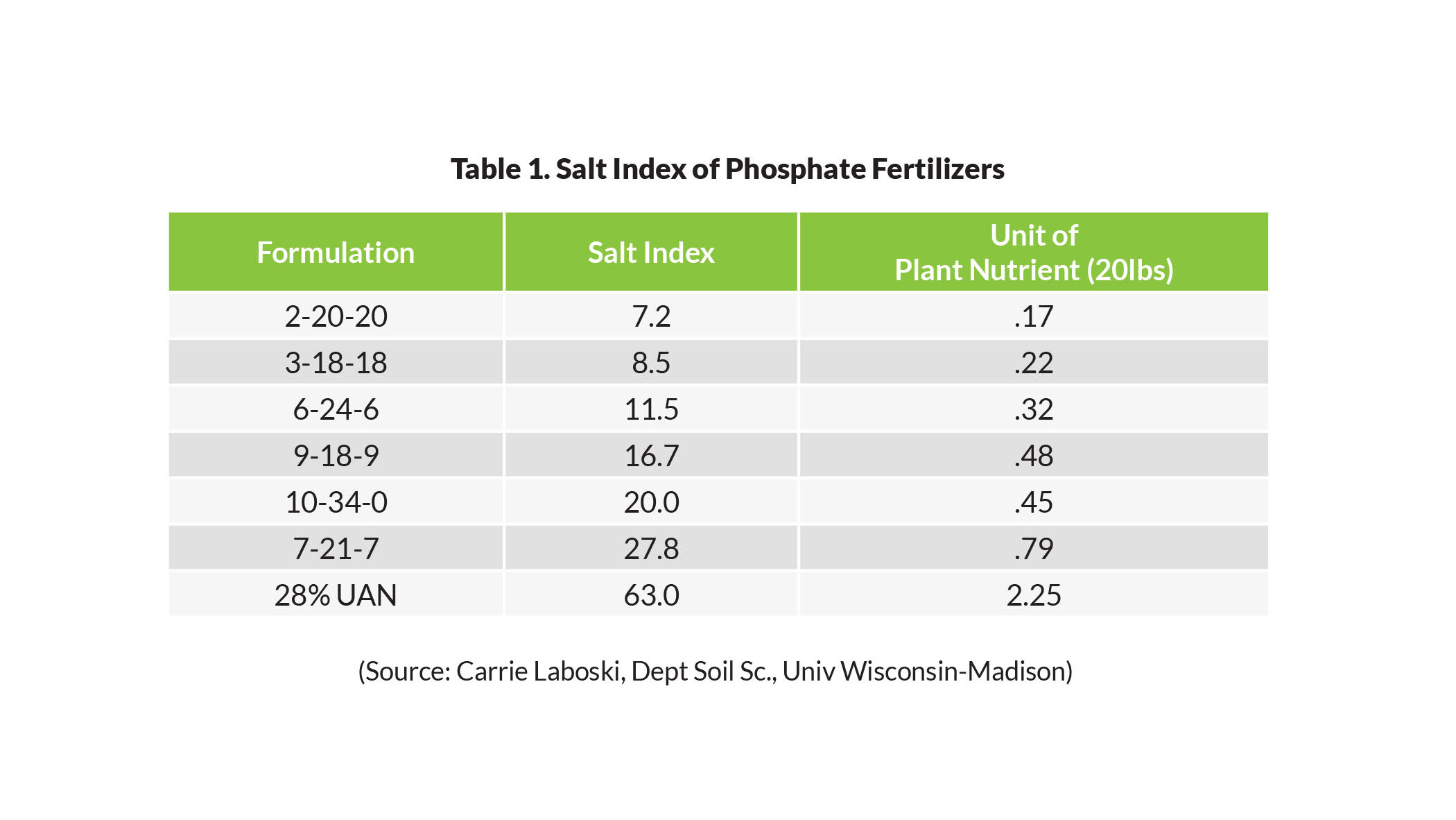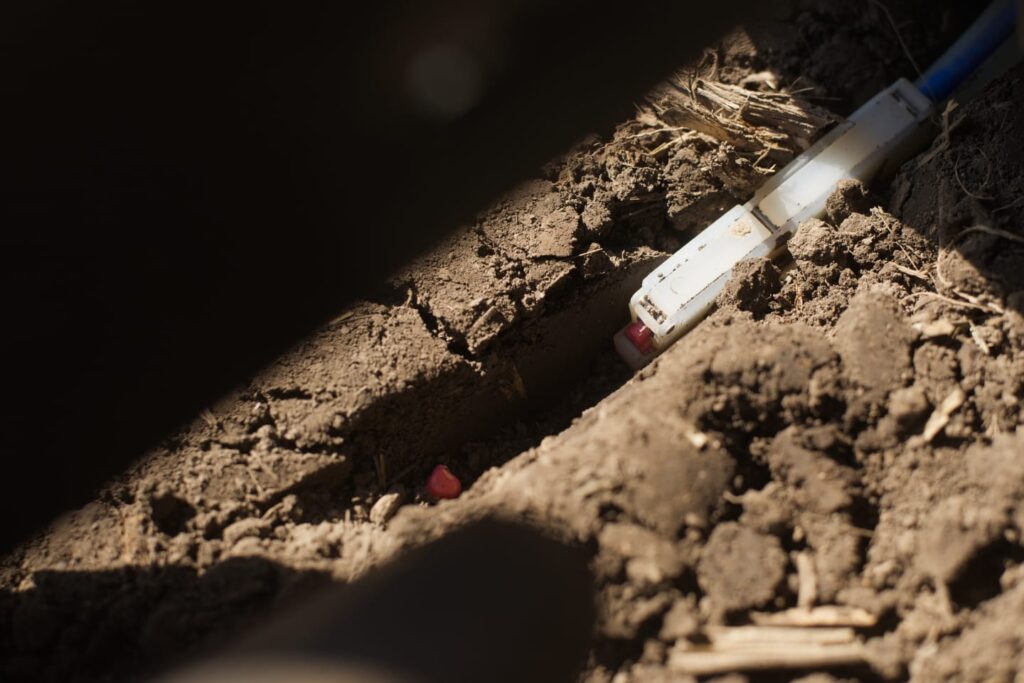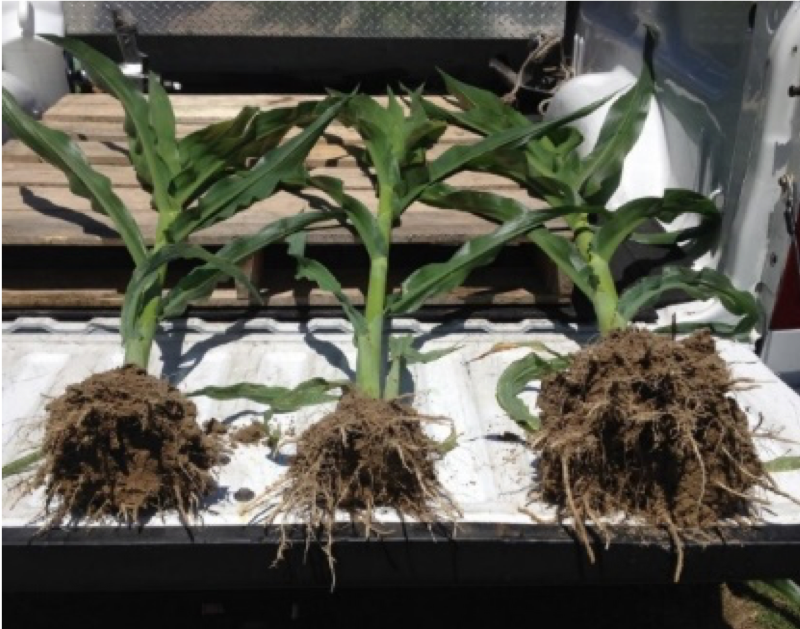
The Ortho vs Poly Debate is a passionate one. Lewis M. Walker, Ph. D. compares and contrasts the common liquid phosphorus sources used at-planting and offers up an innovative alternative. Read on to learn how Loveland Products’ phosphate products with C2 Technology can provide benefits over these traditional forms of phosphate. Pardon the pun as Dr. Walker “starts” with some facts…
Orthophosphate Fertilizers
Orthophosphate (Ortho-P) is the primary form of phosphate utilized by plants. There are two forms of Ortho-P in soils: H2PO4– and HPO42-. The form that predominates depends on your soil pH. The common Ortho-P products are clear liquids (e.g., 6-24-6, 3-18-18, 9-18-9). Ortho-Ps are very reactive with calcium (Ca), magnesium (Mg), iron (Fe), and aluminum (Al). However, since Ortho-P is prone to becoming insoluble via precipitation with Mg, Fe and Al, it can be challenging to optimize performance on alkaline or acidic soils. Ortho-P products work best at soil at pH of 6.2 to 6.5. Therefore, they work best when placed directly on the seed to optimize performance.
Relative to commodity Poly-P, Ortho-P is the preferred form of phosphorus to use in an At-Planting Application with direct seed contact. Ortho-P products typically have a low salt index and higher seed safety than commodity polyphosphate (Poly-P) products (Table 1). They are applied at low use rates in-furrow. Unlike commodity Poly-P, Ortho-P is weak at sequestering micronutrients, so compatibility can be a challenge. Therefore, low rates of micros are used with Ortho-P if any in a formulated product, and EDTA chelation is typically required when tank mixing for stability.

Polyphosphate Fertilizers
Polyphosphate (Poly-P) is a long chain of Ortho-P Commodity Poly-P products include 10-34-0 and 11-37-0. Over time, Poly-P will convert into Ortho-P in the soil. It will also reduce the fixation/precipitation of phosphorus (P) in soils for a period of time, and are compatible with a wider range micronutrients like manganese (Mn) and zinc (Zn) formulations. This is a benefit of poly over unprotected ortho. Poly-P products are generally used at higher rates than Ortho-P 2×2, but have been used in-furrow at low rates on higher CEC/OM soils. As noted before, seed safety can be a concern with commodity Poly-P.

C2 Technology Enhances All Types of Phosphates
While many still debate when and where to use ortho vs poly fertilizer. There are other means by which we can influence phosphorus availability. Playing to the strength of both Ortho-P and Poly-P by leveraging unique technology – Loveland Products’ phosphate products with C2 Technology include Black Label Zn, Altura and Ativus PK.
These C2 powered solutions are 90:10 Ortho:Poly. Unlike traditional clear liquid Ortho-P products, C2 powered phosphate products are not as likely to react with soil minerals. This is because the phosphate in these products is reacted with specific carbon molecules derived from leonardite. As a result, the phosphate in these technologies is more mobile and remains soluble longer in soils (> 42 days after application) (Ajwa et al). In contrast, Ortho-P and commodity Poly-P products have limited mobility, are typically only ~25% available in soils and tie-up in the soil after approximately 20-30 days. The pictures below were taken in North Carolina on mineral soils with CEC of 5 to 7, and with a pH range of 5.8 to 6.2. Ortho-P (6-24-6) reacted with Fe and Al in the soil, becoming unavailable to crop and delaying crop maturity.

The Ortho-P-treated plants were smaller than both the untreated and the Black Label Zn P-treated plants. Plants treated with Black Label Zn were significantly greater in root and shoot biomass and were 1 to 2 collars ahead in development.

Your Nutrien Ag Solutions Crop Consultant can help you determine the best answer for adding At-Planting Nutrition Use Efficiency to optimize your current fertility program. Contact them today!







